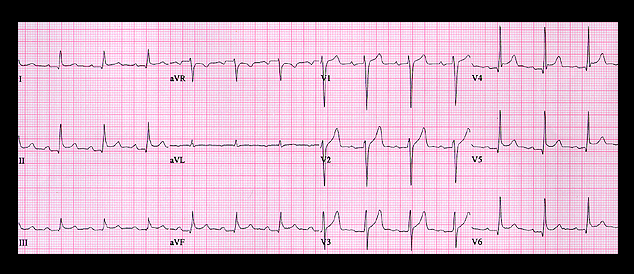
The ECG shown here is from a 61 year old patient who was receiving dialysis therapy for severe chronic renal insufficiency. He was seen in the Emergency Department complaining of chest and epigastric pain. How would you interpret the ECG and what would you expect to find on physical examination?
